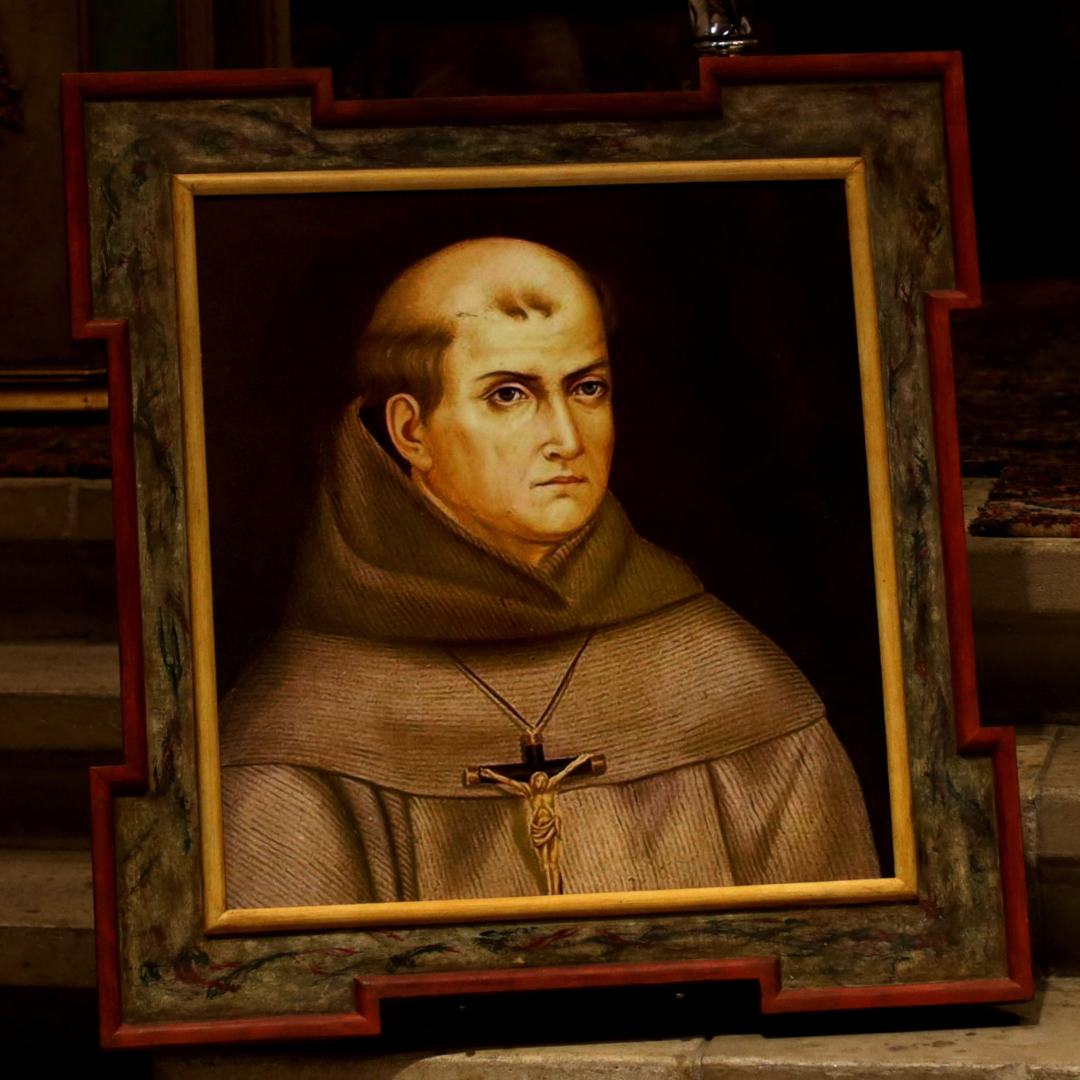Saint Junipero Serra was born to poor, hardworking, unlearned farming parents on the picturesque Island of Majorca off the coast of Spain in 1713.
His parents wanted him to have an education and sent him to the Franciscan school in Palma, Majorca where he learned Theology, Philosophy, mathematics, literature and to read, write, and speak Latin.
He continued helping his parents on their agricultural and livestock farm which was good preparation for the work he would later do for the Missions.
Padre (Father) Serra was ordained in 1738 and soon became the Superior of the Lullian University on Majorca. He had a PhD in Theology and taught all the subjects he had learned in school. As well as being a brilliant professor, he was gifted in singing Gregorian Chant.
During his time as a professor at the university, and teaching the Saint John Scotus’ dissertation on the Immaculate Conception of the Blessed Mother, his position came into jeopardy since the Spanish Inquisition opposed this belief. It was not until more than 100 years later the Immaculate Conception was declared a dogma of the church on Dec. 8, 1854.
Father Serra then volunteered to become a missionary along with many other Spanish priests who left for New Spain (Mexico) and California.
Arriving in New Spain, he and his fellow Franciscan friars visited the Our Lady of Guadalupe Shrine, which was well-known by the Franciscans and Europeans since Our Lady appeared there in 1531, over 230 years prior.
Shortly after his arrival, he was bitten by a large zuchetta (mosquito), which caused a painful leg infection. The wound never healed and caused him to limp for the remainder of his life. Despite this, he walked over 4,000 miles in his lifetime.
In 1769, he arrived by land expedition to San Diego, Calif., where he erected a cross and said Mass.
This first of the 21 missions was named San Diego de Alcala in honor of a Franciscan saint whose feast day was close to their arrival.
The group included many Spaniards, soldiers, livestock, and supplies, such as seeds of all kinds, olive and fruit trees, and grapevines. They were greeted by over 600 Native Americans who marveled at the newcomers.
Padre Junipero insisted the friars learn the language of the Native Americans. The natives taught the Spanish fishing, hunting, basket weaving, and where to find good water.
The Spanish friars taught them the Catholic Faith, crop growing, raising livestock, carpentry, blacksmithing, adobe brick making, and building skills, as well as land irrigation from the nearby river.
Together they built the first mission church, which had many simple primitive dwellings and later sturdier structures.
Before Saint Junipero Serra died in 1784, there were thousands of baptisms of the native people at the San Diego Mission. Later in 1834, at the height of all 21 Missions, 87,787 baptisms were recorded and the people had raised more than 15,000 cattle and thousands of farm animals.
Father Serra soon saw the need to speak to the Viceroy in Mexico for a Regulamento, or a Bill of Rights to protect the native women from harm by the Spanish soldiers.
The document included protection for all the native people – that they should be treated fairly and respected. It also included serious consequences to be imposed on violators.
Many of the native people liked the new way of life of the Spanish friars and worked peacefully together at Mission San Diego until the night of Nov. 4, 1775, when over 600 natives arrived at the mission, possibly to plunder it. A fire broke out destroying the church and all the buildings.
One of the natives murdered was the pastor, Father Luis Jayme. After he was killed, Father Serra said, “Thanks be to God, now that the land has been watered with blood; certainly the conversion of the San Diego Indians will be achieved.”
The example of the priests forgiving the native people united the community and brought a multitude of converts to the Catholic Faith.
Padre Serra then successfully appealed to the Viceroy that a pardon be given to the murderer.
Saint Junipero Serra traveled up the coast of California and founded the first nine missions. Later, his fellow Franciscans founded more for a total of 21 missions.
When he died in Mission San Carlos Borromeo, Padre Serra’s funeral was attended by hundreds of native peoples--so many that the prayers of his Franciscan friars were drowned out by the crying and wailing of the Native Americans.
On Sept. 25, 1988, Saint Junipero Serra was beatified by Pope John Paul II.
Pope Francis canonized Junipero Serra on Sept. 23, 2015, during a Mass in Washington, D.C. It was the first canonization to take place on American soil.
Saint Junipero Serra’s feast day is July 1.
Read more about the life of Saint Junipero Serra in The Man Who Founded California, by Archbishop MNL Couve de Murville, Ignatius Press.


